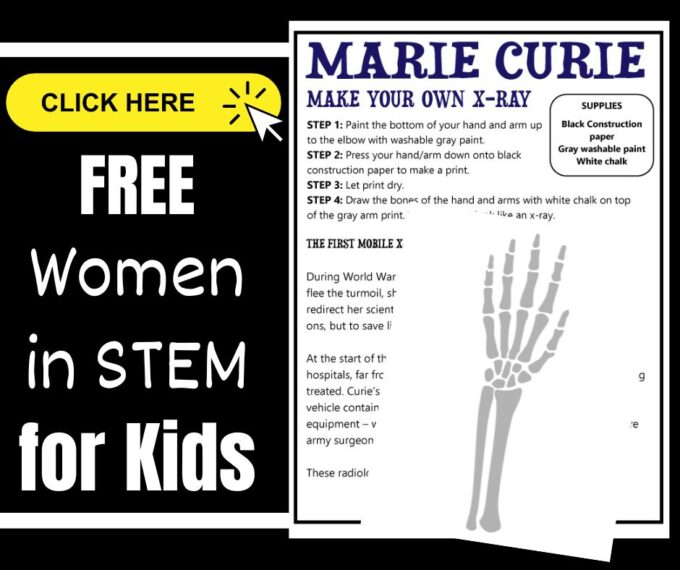Marie Curie, a pioneer in radioactivity, left an indelible mark on the world of science with her groundbreaking discoveries. Her relentless curiosity and dedication to research earned her two Nobel Prizes and revolutionized our understanding of the atom and its behavior. Today, we pay tribute to her remarkable legacy by engaging in a hands-on project that allows kids to explore the principles of X-rays inspired by Curie’s groundbreaking work.
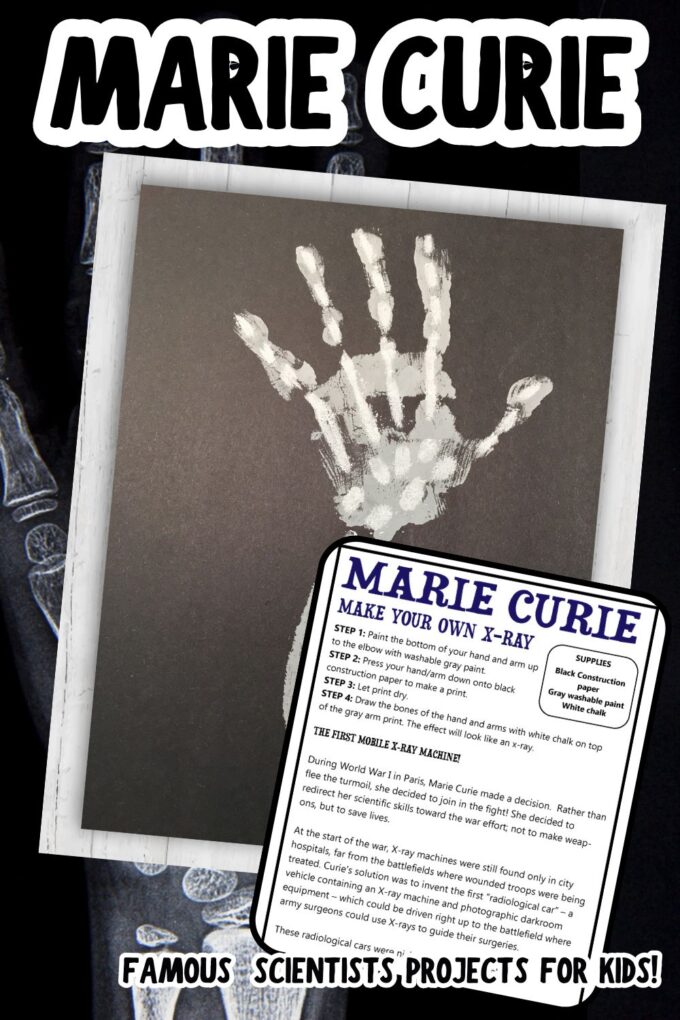
Who Is Marie Curie?
Marie Curie was born Maria Skłodowska in Poland in 1867, and she defied the societal norms of her time to pursue higher education in France.
Despite facing numerous challenges as a woman in science, she persevered and, alongside her husband, Pierre Curie, conducted groundbreaking research on radioactivity. In 1898, they discovered radium and polonium, both of which emit radiation. Marie Curie’s work laid the foundation for the understanding of radiation, including X-rays.
During World War I, Marie Curie recognized the importance of X-rays in medical diagnostics. She developed and implemented mobile radiography units, also known as “Little Curies,” to provide on-the-spot X-ray imaging for injured soldiers. This marked a significant contribution to battlefield medicine.
Marie Curie was awarded the Nobel Prize in Physics in 1903 (shared with Pierre Curie and Henri Becquerel) for their work on radioactivity, becoming the first woman to receive a Nobel Prize in Physics. She later received a second Nobel Prize in Chemistry in 1911 for her discoveries of radium and polonium.
Marie Curie’s legacy serves as an inspiration for aspiring scientists of all ages. By engaging in hands-on activities like this forearm X-ray project, kids can not only learn about the principles of X-rays but also appreciate the groundbreaking discoveries made by trail blazing female scientists like Marie Curie.
What is an X-Ray?
An X-ray is a special kind of light that we can’t see with our eyes. It’s like a superpower light that can pass through some things, like skin and muscles, but not through others, like bones. When a doctor takes an X-ray picture, they use a machine that sends this special light through your body onto a special paper.
The parts of your body that the X-rays pass through quickly, like your skin and muscles, appear dark on the paper. But the parts that the X-rays can’t pass through, like your bones, show up as bright white spots on the picture. That’s how doctors can see if your bones are healthy and if there are any problems inside your body without cutting you open!
X-rays, a form of electromagnetic radiation, are pivotal in various fields, from medicine to engineering. Marie Curie’s work laid the foundation for the development of X-ray technology, revolutionizing medical diagnosis and treatment.
Make An X-Ray Project
In this hands-on project inspired by Curie’s work, kids can explore the principles of X-rays using simple materials.
Materials Needed:
Instructions:
STEP 1: Set up a darkened room or dimly lit area to enhance the visibility of the X-ray effect.
STEP 2: Have the kids paint their forearms, wrists, and hands with grey washable paint.
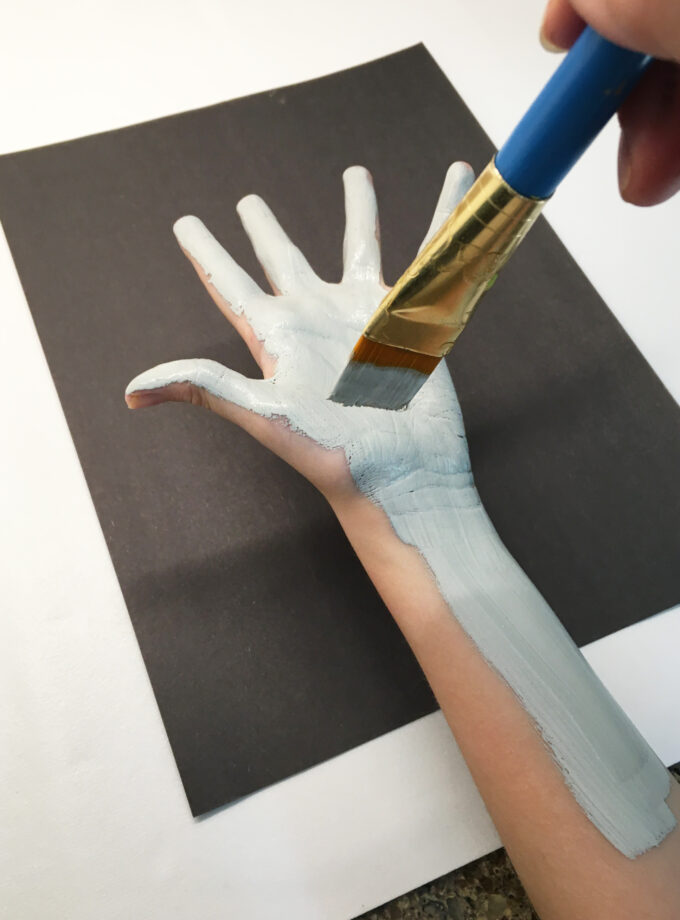
STEP 3: Carefully press the painted area onto the black paper to capture the bones’ shape.
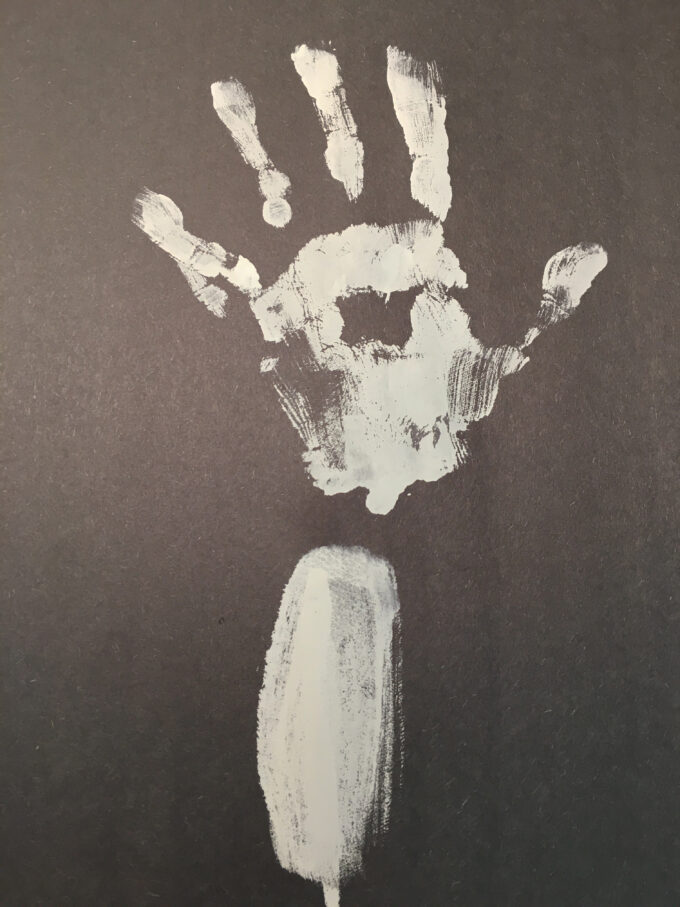
STEP 4: Using chalk, draw the details of the hand within the outlined forearm, including fingers, knuckles, and any distinct features.
Experiment (Optional): Shine a flashlight from the side onto the painted forearm and hand with the room darkened. Observe how the light passes through the paper, creating an X-ray-like effect that reveals the bones’ outline.
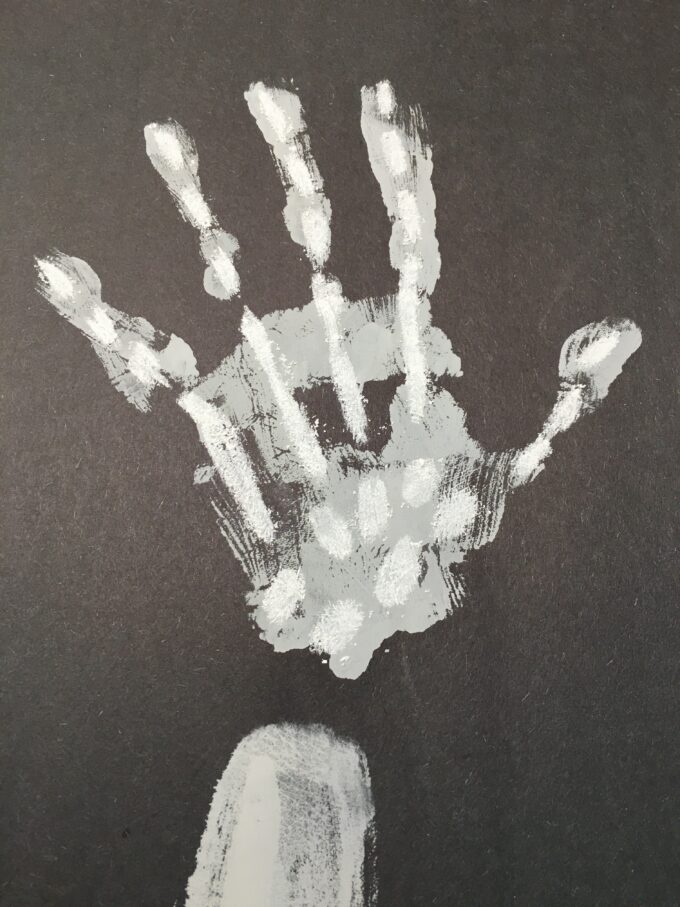
Printable X-Ray Template
Get ready to learn about x-rays and Marie Curie! Download the project here.
Learn About Curie For Women In Science Month
Marie Curie is an excellent choice for Women’s History Month for several reasons. Firstly, her remarkable scientific achievements challenged the societal expectations of her time, and demonstrate the power of perseverance and determination in pursuing one’s passions.
Secondly, Curie’s groundbreaking discoveries in radioactivity advanced our understanding of the natural world. They paved the way for numerous scientific innovations, making her a role model for aspiring young scientists, regardless of gender.
Additionally, Curie’s status as the first woman to win a Nobel Prize and the only person to win Nobel Prizes in two different scientific fields is a powerful example of breaking barriers and achieving excellence. By learning about Curie’s life and work, kids can be inspired to dream big and strive for greatness in their own pursuits, regardless of their obstacles.
More Famous Women In Science Projects
Explore all of our famous scientist projects here!
- Marie Tharp – Ocean Mapping
- Mary Anning – Dinosaur Fossils
- Katherine Johnson – Lunar Lander
- Mae Jemison – Space Shuttle
- Mary Jackson – Wind Tunnel
- Susan Picotte – Stethoscope
- Margaret Hamilton – Binary Code


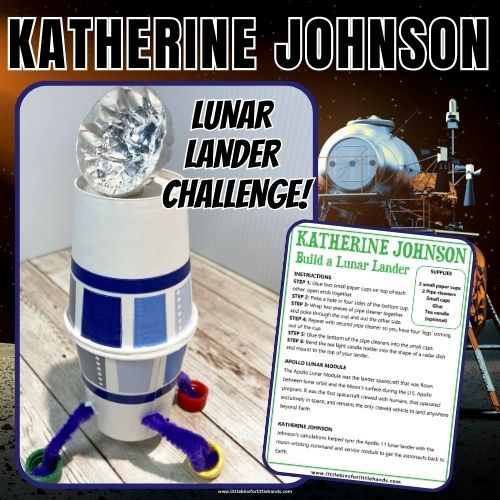


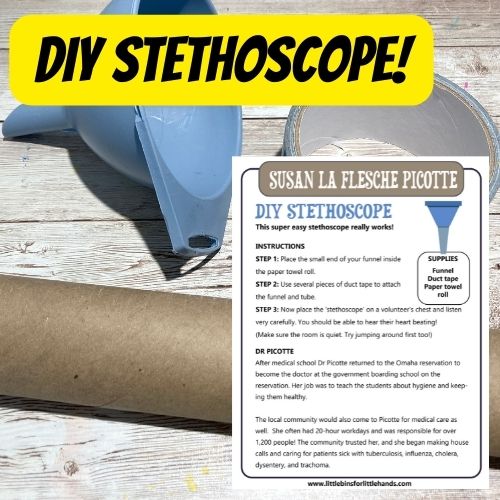
Complete Famous Scientist Project Pack
The printable famous scientist pack for kids includes 22+ scientists to explore, such as Marie Currie, Jane Goodall, Katherine Johnson, Sally Ride, Charles Darwin, Albert Einstein, and more! Each scientist, mathematician, or inventor includes:
- Project Sheet with instructions and step-by-step photos (additional printable included if applicable).
- Biography Sheet that is kid-friendly. Get to know each scientist!
- Animated Videos that cover a simple project idea to try for each scientist!
- My Favorite Scientist Mini Pack to explore a favorite scientist further if desired.
- Games! Secret Codes and Word Search Games
- Supply List to help you fill your science kit for anytime projects!
- Helpful Tips to make each project successful for everyone!
- Bonus Women In STEM pullout pack (note there are a few different activities, but some are the same, simply a convenient smaller pack to use when prepping)



